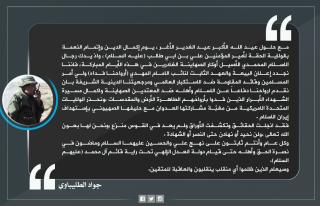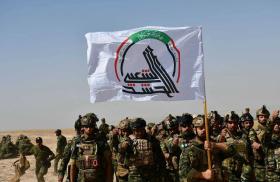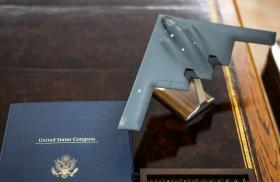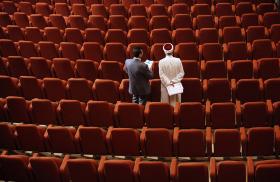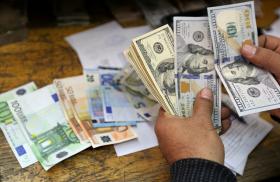Iraqi Militias Show Cohesion and Restraint During Iran-Israel War
The self-styled "resistance" is probably being held in reserve in case the United States joins the war, with militias noticeably restraining themselves so far.
In response to President Trump's recent remarks that Supreme Leader Ali Khamenei could be targeted as part of the current strikes on Iran, Akram Kaabi, leader of the Iran-backed Iraqi militia Harakat Hezbollah al-Nujaba, issued a direct threat against U.S. diplomats, citizens, and other interests. In a statement posted on June 19, he declared: “Perish in your disgrace and eat dirt, you criminal Trump! Who are you to threaten a pillar of the Islamic nation with death?! By God—and again, by God—if you lay a single finger on the leader of the umma, Imam Khamenei, then you and your allies and vile lackeys will be under our pursuit and fire across our entire Islamic region...and not a single one of your soldiers or diplomats will be spared. In fact, anyone carrying your nationality in our region, and all your direct and indirect interests, will become legitimate targets for us" (Figure 1).
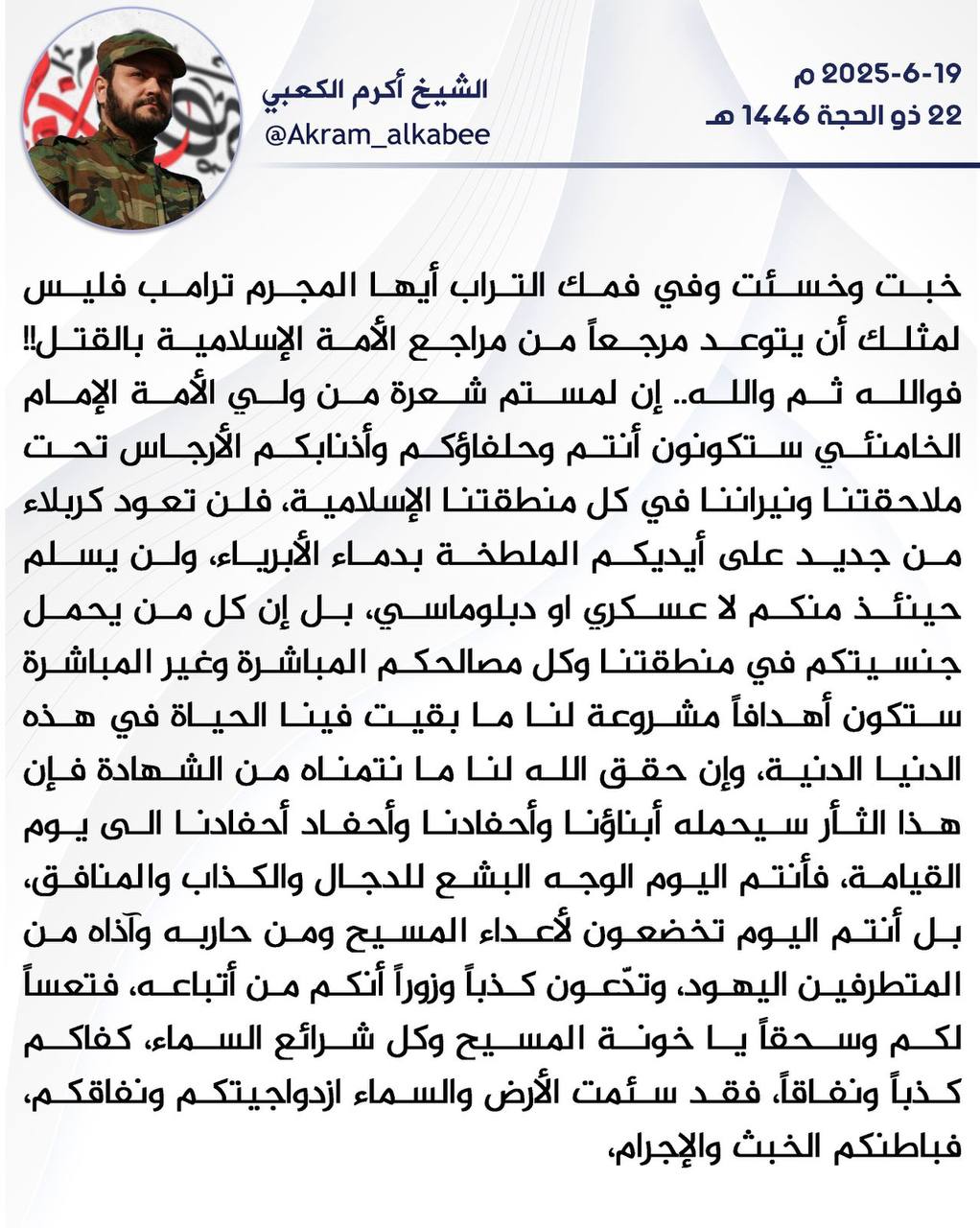
Prior to Kaabi's remarks, Kataib Hezbollah (KH) security chief Abu Ali al-Askari offered his own reaction to Trump, albeit in somewhat more restrained language. In a statement issued in both Farsi and Arabic, he wrote: “The foolish madman Trump has erred—both in his rhetoric and in his timing. He should have understood this before speaking about the stature of Imam Khamenei."
Askari went on to reiterate a point made by KH Secretary-General Abu Hussein al-Hamidawi on June 15, emphasizing that the Islamic Republic was fully capable of confronting Israel on its own. Askari warned that any potential involvement by the Iraqi muqawama (resistance) would be contingent on direct U.S. participation in the war: “We reaffirm that any American entry into this war will bring upon it unprecedented destruction and calamities.” He also implied that in such a scenario, KH might choose to target U.S.-aligned Gulf states: “Matters may escalate to the point that the thief Trump is deprived of the trillions he dreams of seizing from this region” (Figure 2).
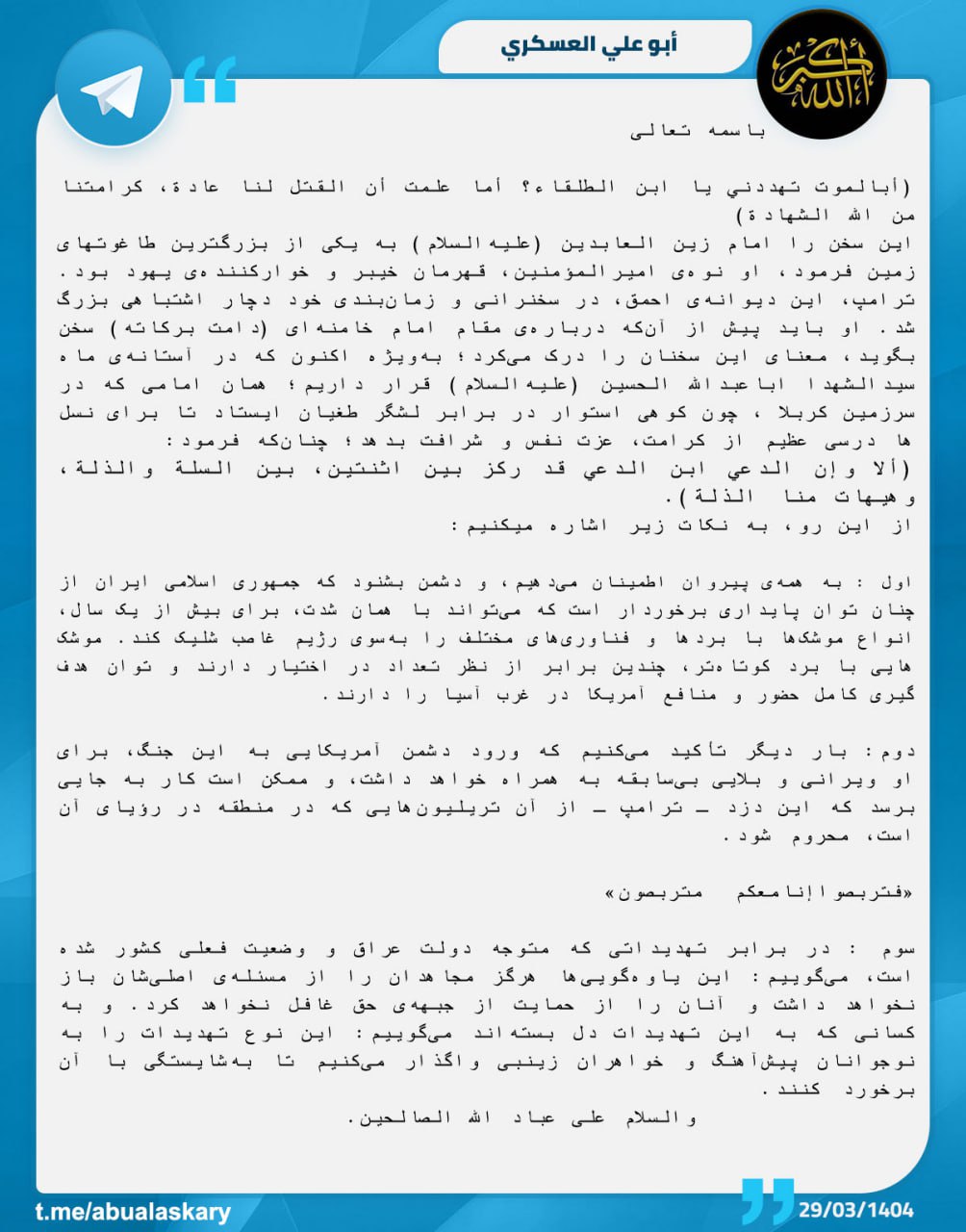
Curiously, Hamidawi's June 15 statement called on “the Iraqi government and...the Coordination Framework to act to prevent the expansion of the war. This includes shutting down the embassy of the Great Evil [America] and expelling the American occupation forces from the country" (Figure 3). This was a notably toned-down message in an election year—by calling on Iraqi leaders to prevent the war from reaching Iraq, Hamidawi seemed to shift from KH’s usual rhetoric, which has often included threats and language suggesting Iraq could be drawn into the conflict.
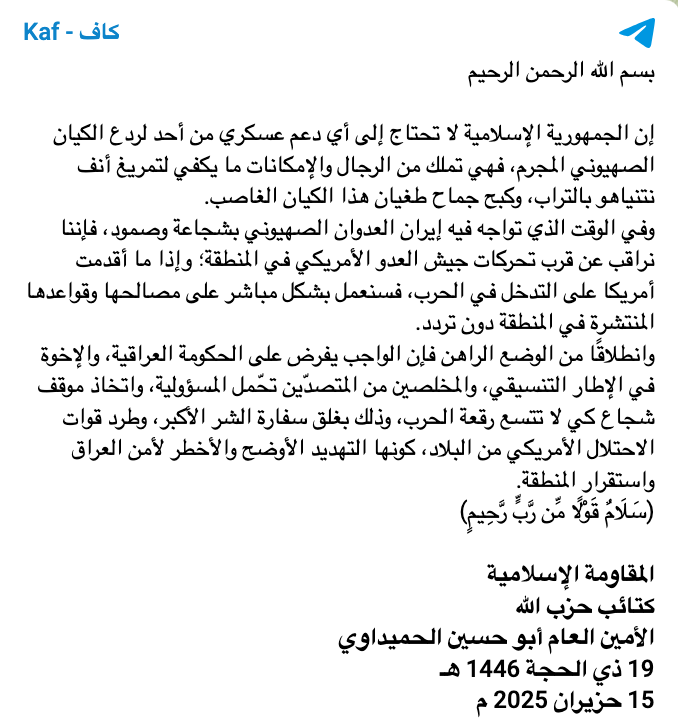
Meanwhile, Asaib Ahl al-Haq leader Qais al-Khazali chose not to issue a statement himself. Instead, he delegated the task to the militia’s head of security, Jawad al-Talibawi, who reiterated the group’s allegiance to Khamenei and warned the United States "of the consequences of joining its Zionist ally in the aggression against Islamic Iran" (Figure 4). Yet he did not specify what those consequences would be.
Protesting at the U.S. Embassy
Following its regular meeting with Prime Minister Mohammed Shia al-Sudani in attendance, the Shia Coordination Framework issued a statement calling on Iraqi citizens “to take to the streets in demonstrations condemning the aggression and expressing support for the steadfastness and resilience of the Islamic Republic in confronting it.”
This call coincided with a coordinated push by muqawama-affiliated social media channels to mobilize protests near the Mualaq Bridge in Baghdad demanding the closure of the nearby U.S. embassy. Sabereen News, a prominent Telegram channel with over 700,000 followers, was particularly active in promoting the demonstrations, especially among the muqawama support base and members of the Popular Mobilization Forces. Demonstrating its wide reach, a single Sabereen News post on June 15 urging all muqawama media and influencers to cover the protest was viewed nearly 134,000 times within a day (Figure 5). Despite these efforts, only a few dozen people took part in the demonstrations—highlighting the prevailing mood of Iraqi reluctance to be drawn into the broader conflict, even among muqawama circles.
What's Next for Militia-U.S. Tensions in Iraq?
After the October 7, 2023, Hamas attack on Israel, the Iraqi muqawama offered similarly tough talk about evicting U.S. forces and striking U.S. bases if Washington joined that war. Then, after the October 17 al-Ahli Hospital explosion in Gaza, the muqawama attacked U.S. bases as part of a "unity of fronts" action that had nothing to do with actual U.S. involvement. This time around, Iraqi terrorist and militia groups are being more cautious and are probably grateful to be “held in reserve” for use if the United States becomes directly involved. Apparently, the "unity of fronts" approach is being saved for the last resort.
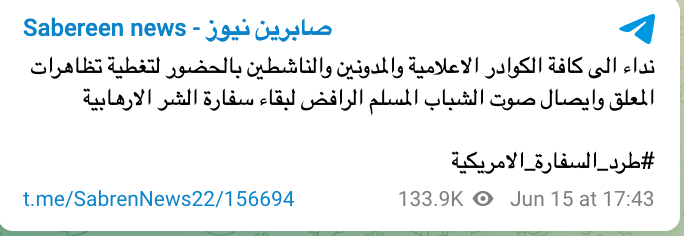
The muqawama are showing cohesion as well as restraint. There is no evidence yet of Iran-backed militias in Iraq striking U.S. forces or using Iraqi territory to attack Israel. Iranian drones have been intercepted in Iraq during the conflict, but they were moving through Iraqi airspace en route to Israel and reportedly passed too close to U.S. facilities at al-Asad Air Base and Erbil airport. Smaller or more radical muqawama groups like Harakat Hezbollah al-Nujaba and Kataib Sayyid al-Shuhada have not unilaterally attacked U.S. sites or Israel either. This level of cohesion is probably due to an early directive from Iran's Islamic Revolutionary Guard Corps-Qods Force. If the United States becomes directly involved in the war, this same cohesion and apparent attention to Qods Force orders could be used to trigger muqawama strikes on U.S. facilities in Iraq, as well as strikes launched from Iraq against U.S. targets in Syria, Jordan, and maybe even the Gulf states.

